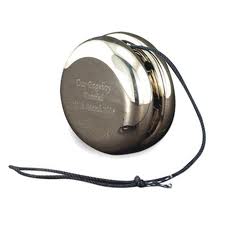What is the difference between the Yo Yo Tests?
How to use the Yo-Yo test
 The Yo-Yo may have been around for nearly 1000 years, but today a new form of Yo-Yo is a regular fixture in Sport’s coaches’ fitness testing toolbox.
The Yo-Yo may have been around for nearly 1000 years, but today a new form of Yo-Yo is a regular fixture in Sport’s coaches’ fitness testing toolbox.
The Yo-Yo Fitness Tests were designed as a specific means of testing fitness for sports which are intermittent in nature such as football.
Here Matt Durber summarises how to use them.
Yo-Yo Endurance Test
A continuous running test similar to the beep test, designed to estimate an individual’s maximum oxygen uptake (VO2 max). Players run continuously between two cones 20m apart at increasingly faster speeds.
Due to the continuous nature of the test, it is best suited to endurance athletes such as long distance runners.
There are two versions of this test: The Level 1 test is effectively the same as the standard beep test with speeds ranging from 8kph-18.5kph.
The Level 2 test starts at a higher running speed (11.5kph) and has different increments in speed and is therefore more suited to elite levels athletes.
The athlete’s score is the total distance covered before they were unable to keep up with the recording. The Yo-Yo endurance test usually takes between 6-20 minutes for level 1 and between 2-10 minutes for level 2.
Yo-Yo Intermittent Tests
The Yo-Yo Intermittent Test is designed to replicate the demands of sports such as football where game play is not continuous.
There are two variations of the intermittent test: The Intermittent Endurance Test and the Intermittent Recovery Test each with two levels of varying intensity.
The Intermittent Endurance Test consists of similar running speeds to the endurance test but includes an additional 5 seconds (5m) active recovery period in between each 20m shuttle. 
Recently, a group of Excelsior Athletes completed the Intermittent Endurance test and all reached the benchmark level set by the England and Wales Cricket Board.
The young cricketers had done no running fitness, only foundation strength and agility work, focussing on braking and turning mechanics.
The Intermittent Recovery Test is more intense with running speeds beginning at 10kph (level 1) and 13kph (level 2).
In contrast, there is a longer active recovery of 10 seconds (10m) between shuttles to allow more recovery. The nature of this test would suit itself to sports with many high intensity efforts and short breaks such as Rugby Union or Tennis.

Summary

Start of a yo yo test.
These Tests are good indicators of fitness for team sports, as they replicate the demands of many sports.
The inclusion of shuttle runs within the tests assesses the ability to change direction in addition to running ability.
They have become more popular in recent years, as the continuous bleep test has fallen out of favour. However, it is important to know what you are testing and why before you start any fitness testing programme.
Rather than think “beep test vs yo-yo test” think “Do I need to fitness test my team ?” That is something we emphasise on our coaching courses.
Matt Durber
Further reading:
How to make pre-season training interesting, relevant and fun
Reference:
Bangsbo, J. (1994) Fitness Training in Football: A Scientific Approach. August Krogh Institute: Copenhagen University

Thanks Matt, it is important to understand what you want to measure and why, before you choose any test. “Because Team X do it” is a poor reason!
[…] Do you start your pre season with an endurance fitness test? Your players turn up and do either the bleep test or the yo-yo test. […]